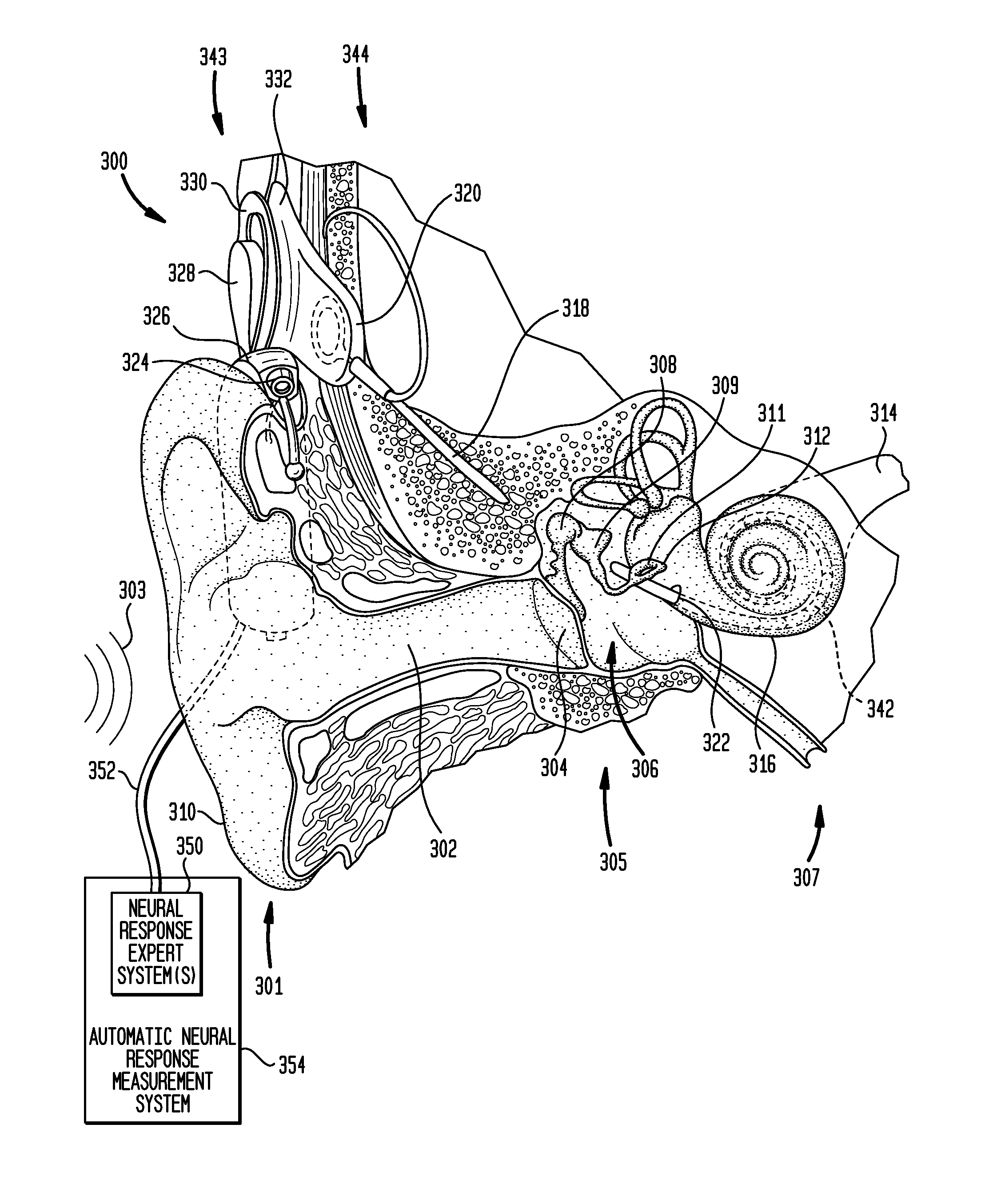Automatic measurement of an evoked neural response concurrent with an indication of a psychophysics reaction
a neural response and automatic measurement technology, applied in the field of evoked neural response measurement, can solve the problems of conductive hearing loss, impeded normal mechanical pathways for sound to reach the hair cells in the cochlea, and impaired hearing
- Summary
- Abstract
- Description
- Claims
- Application Information
AI Technical Summary
Benefits of technology
Problems solved by technology
Method used
Image
Examples
Embodiment Construction
[0050]An embodiment of the present invention is directed to a method of fitting to a recipient a cochlear implant including a plurality of stimulation channels. An embodiment of the present invention also includes an apparatus for executing the method. The method includes applying to at least one stimulation channel of the cochlear implant a first stimulus signal comprising a neural response component and a psychophysics signal component. This is followed by automatically measuring an evoked compound action potential (ECAP) of the recipient evoked in response to the application of the neural response component of the first stimulus signal. The method further includes simultaneously providing to a user an indication of the automatically measured ECAP and a value of the applied psychophysics signal component.
[0051]In an exemplary embodiment of the present invention, the action of applying to at least one stimulation channel of the cochlear implant a first stimulus signal comprising a ...
PUM
 Login to View More
Login to View More Abstract
Description
Claims
Application Information
 Login to View More
Login to View More - R&D
- Intellectual Property
- Life Sciences
- Materials
- Tech Scout
- Unparalleled Data Quality
- Higher Quality Content
- 60% Fewer Hallucinations
Browse by: Latest US Patents, China's latest patents, Technical Efficacy Thesaurus, Application Domain, Technology Topic, Popular Technical Reports.
© 2025 PatSnap. All rights reserved.Legal|Privacy policy|Modern Slavery Act Transparency Statement|Sitemap|About US| Contact US: help@patsnap.com



